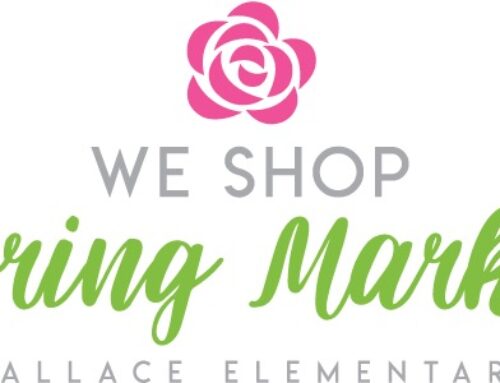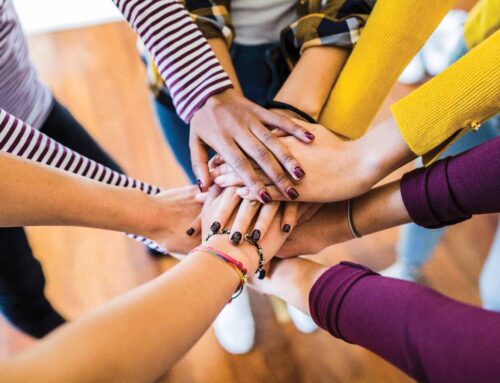Beth Hanks knows how hectic life is today – especially for moms and dads as they zoom from work to field trip to dentist to soccer game to grocery store to school play.
There isn’t much time left to volunteer duty such as calling businesses for donations to a child’s school.
But some local retailers and grocers have made raising funds as simple as buying a box of corn flakes.
“That’s what is so positive about these things. They don’t require a lot of volunteer effort,” says Hanks, PTA president for Lake Highlands Elementary School.
“Schools are having to look for other ways of fundraising that are easier and less labor intensive. The workforce is getting smaller every year. Schools can’t host carnivals anymore.”
EVERYWHERE YOU LOOK
Often, all you have to do is open a few doors and drawers in your kitchen. You may not realize how easily a child’s school or neighborhood nonprofit organization can earn money just from the stuff in your pantry. A box of cereal, a bag of groceries, a phone call…all have a payoff if you know where to look.
With programs ranging from collecting box tops to swiping a card at the check-out counter, it’s not difficult to find the means to support a local school, church or nonprofit organization.
You might be surprised to learn how much of a difference can be made in our backyard, just doing the kinds of things most of us do every day – running into the grocery store to pick up milk and bread, shopping for new kitchen towels, phoning a grandmother in Arizona.
These programs work in various ways. Sometimes, a percentage of the purchase is paid to the organization, or the organization accrues points based on purchase amounts. General Mills contributes 10-15 cents per returned box top. A long distance phone call with AT&T earns points toward school equipment. A bag of groceries at Albertson’s or Tom Thumb generates a donation for a percentage of the purchase amount.
LEARNING TO SHARE
Lake Highlands Elementary participates in Kroger’s Share Card program, Hanks says, and the school has collected close to $4,000 since 1998. The Kroger program works on a percentage basis – 1 percent of the purchase amount is returned to the organization. Organizations can apply to be a beneficiary of the Share Card program at any Kroger location; the store then provides members of the organization with cards to use each time they shop.
“It’s really easy,” Hanks says. “Kroger actually gives us a card with our school’s name on it. The cashier just scans the card with the purchase.”
The Share Card isn’t limited to schools or youth-oriented organizations, but also is available to a variety of nonprofit groups.
“Churches use it, schools use it, some companies use it in support of an adopted nonprofit group. Animal shelters can even use it,” says Leslie Wharton, a customer service representative at Kroger.
“The redeem rate doesn’t add anything to the bill. The percentage comes directly out of the order.”
Kroger developed the Share Card in 1997. Since that time, Kroger has contributed more than $1 million to participating charities in the Dallas area.
THE COUPON QUEEN
Barbara Eubank began as a volunteer, only to earn the affectionate title of The Coupon Queen.
One day, she called the PTA president at Lakewood Elementary and offered to manage the school’s alternative fundraising.
“It takes one person who will say, ‘I don’t mind managing the funds,’” she says. “The funds and equipment are all available to schools if the school can find someone to manage it.”
Eubank has been organizing financial gifts for the school for just over a year. Since that time, she has collected corporate gifts from Tom Thumb, Albertson’s, Target, AT&T, General Mills, Minyard Food Stores, Nickel Ranch, Campbell Soups and Wolf Camera, just to name a few.
It didn’t take much for Eubank to learn ways funds and equipment could be earned. Her son told her about General Mills’ Box Tops for Education: He read about the program on his cereal box. She learned of other programs from friends or the companies themselves.
“It hasn’t been difficult,” she says. “I don’t have to ask for anything or solicit funds. Most everything I need is in my kitchen.”
Part of Eubank’s job is encouraging parents and teachers to register Lakewood Elementary as a recipient with companies who offer fundraising programs.
Signing up is as easy as making a phone call, filling out a postcard-sized form, or repeating an account number. So far, the school has earned a significant amount in cash gifts, as well as software and audio-visual equipment.
GOOD NEIGHBORS
Every major grocer in the Dallas area offers a program designed to boost store sales and help generate funds for neighborhood groups. As a result, every time you visit the grocery store, you can be donating funds to a neighborhood organization.
For example, when a neighborhood organization signs up for the Tom Thumb Good Neighbor Program, an account number is assigned to the organization. Shoppers can then use the account number, in conjunction with a Reward card also issued by Tom Thumb, to generate credit for the organization every time they buy groceries.
To activate the Reward card account number, each customer simply tells a cashier the organization’s number before any groceries are scanned. From that point on, every time the Reward card is used, funds accumulate for the organization. Tom Thumb totals the purchases and sends a check directly to the organization for 1 percent of total sales every quarter.
“It’s a passive way to create some income,” says Dena Jones, president of Friends of the Library. “We’ve been using it since last spring. Every little bit helps.”
Friends of the Library board members suggested using the Reward card program to help support library programs. So far, the group receives $200-$400 quarterly, which goes toward purchasing books, funding the Mayor’s Summer Reading Challenge, and supporting other general programs benefiting the Dallas Public Library system.
Tom Thumb now makes most of its community contributions through the Good Neighbor Program, a grocery store spokesman says.
But the grocer still offers Tom Thumb Bucks, a program that involves groups purchasing and then re-selling at a higher price vouchers good for groceries at Tom Thumb.
Lake Highlands Boy Scout Troop 890 has been selling Tom Thumb Bucks to parents and neighbors for more than 10 years. The Bucks can be used as cash at any Tom Thumb store. The troop receives a monthly check for a percentage of the redeemed Bucks.
“We usually receive in excess of $1,000 a year,” says James Shepherd, Boy Scout Troop leader.
Troop 890 consists of 175 boys ranging in ages from 11-17. Money earned from Tom Thumb Bucks finances the troop’s high-adventure activities, such as mountain climbing in Colorado or hiking the Grand Canyon, but the money also goes toward more general needs.
“We have a lot of boys to feed,” Shepherd says. “We meet once a week. That’s a lot of food to buy.”
COMMUNITY PARTNERS
Albertson’s Community Partner Card assists youth programs such as scouting groups, schools, boys and girls clubs, and church youth organizations. At the end of the quarter, each organization can receive a rebate up to $1,800.
The rebate, which is based on a floating percentage of Albertson’s purchase amounts, ranges from 2 to 4.5 percent. Purchase amounts from each card member are accumulated on the organization’s account. Amounts from $50,000-$60,000 receive 4.5 percent, up to $1,800 per quarter.
“It is so simple and so easy,” says James Oliver, general merchandise manager at Albertson’s.
“A family of four spends an average of $150 every week. If only 50 families shop, the organization can easily reach $1,800.”
In the past quarter, Albertson’s says five schools in the Dallas area received $1,800, and eight more earned $1,000.
The Community Partner Card works for purchases at any Albertson’s nationally, so even out-of-town friends and family can help raise funds for neighborhood organizations.
COMPUTERS FOR KIDS
If a school is looking for equipment donations, Minyard Food Stores has an annual program that offers variety and choice. Minyard developed the “Computers for Kids…And More” programs nine years ago. The program, which runs from late August through March, is based on collecting grocery store receipts.
When a school registers for the program, it receives an information packet that includes the application form, step-by-step guidelines, tip sheet for increasing participation, and a catalog of merchandise to choose from.
At the end of the program, the school tallies its receipts, bundles them together, fills out a deposit form, and returns them to the store. Then, the school can choose from any merchandise in the catalog, ranging from soccer balls and baseballs to computers and VCRs.
“We offer a wide variety of things to choose from…Macintosh, IBM and a myriad of software,” says Sammey Matson of Minyard Food Stores.
“We even offer a total gym. Usually, we average donating about $250,000 in school equipment a year.”
About 400 schools participate in “Computers for Kids…And More” each year. Information packets can be found at any of the store’s chains – Minyard, Sac ‘n Save and Carnival.
DISCOVERY QUESTS
Another source for equipment and software is Discovery Toys’ Discovery Quests. Bobbie Collins, educational consultant for Discovery Quests, organizes software fairs and toy-raisers for schools, daycares, churches, hospitals and youth organizations.
Collins offers everything from software to books to toys. A software fair or toy-raiser is similar to a Tupperware party. For everything that is purchased, the host organization receives credits good for free product. The credit also can be converted to cash.
“Usually, they ask for the free product,” Collins says. “The schools usually want software and use it as a supplement to DISD software. But the books are popular, also.”
Collins works with several schools, including White Rock Montessori, Hexter Elementary and Lakewood Elementary. She has even organized a toy-raiser for United Methodist Developmental Learning Center in Lakewood.
TARGET ON FUNDRAISING
Even a credit card can be put to good use.
Target began a program that is self-explanatory – “School Fundraising Made Simple.” The program benefits K-12 schools by returning 1 percent of Target credit card purchases to the customer’s designated school.
Target customers can choose a school when they apply for a Target Guest Card or call an 800 number if they already are Target Guest Cardholders.
Since Target began “School Fundraising Made Simple,” more than $800,000 has been donated to participating schools.
CHARITY STARTS AT HOME
Donating doesn’t have to be as impersonal as writing a check to a national cause, but can start grassroots in our own backyard. With so many choices and so much to gain, the community as a whole benefits. Schools, churches and nonprofits are able to earn needed equipment and funds. Individuals can donate to a worthy cause and know they are supporting their community. And local businesses become active members in the community they serve.
Lottie Minick, owner of Nickel Ranch, expressed it simply as the emotion that comes from participating in the fund-raising programs, both as a corporate donor and as an individual.
“For the first time, I feel like I’m really doing something to help. I’ve lived in the neighborhood for 25 years, and now I’m involved in it.”





